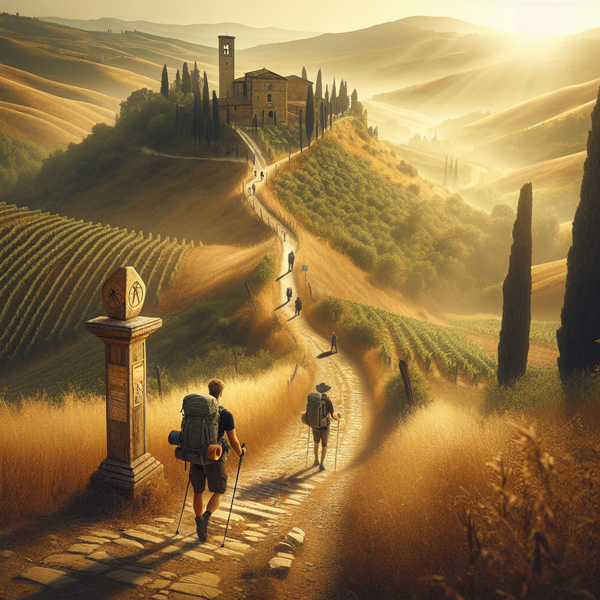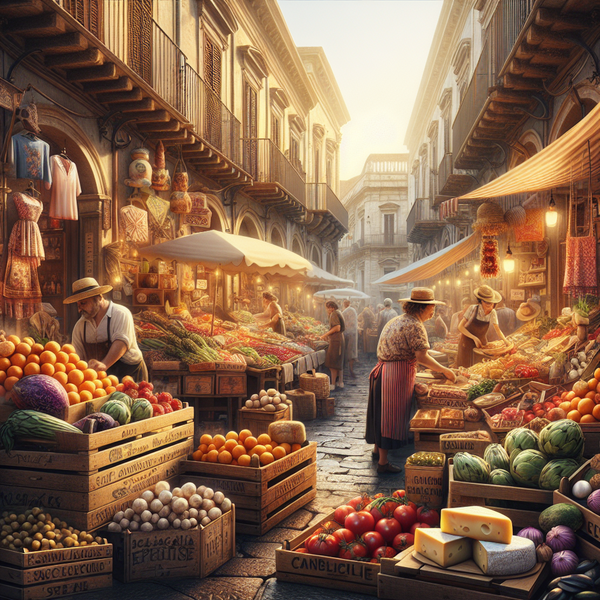Imagine yourself stepping into a trail walked by pilgrims for centuries, where every village whispers history and every rolling hill invites reflection. Walking the ancient Via Francigena pilgrimage route offers a profound adventure filled with cultural encounters, natural beauty, and a chance to reconnect with simplicity. Unlike modern tourism, this path is not just about destinations; it is about the journey itself.
Go to the section
ToggleWalking the Via Francigena pilgrimage route: An introduction
The Via Francigena is one of the oldest pilgrimage routes in Europe, stretching from Canterbury in England through France and Switzerland before entering Italy. While the full length is vast, many walkers choose specific segments, especially the Italian portion leading through Tuscany down to Rome. This path has been a spiritual, cultural, and trade link for countless generations, and walking it today feels like stepping back in time.
Historical significance of walking the Via Francigena
When you embark on walking the Via Francigena pilgrimage route, you are following in the footsteps of medieval pilgrims, merchants, and even royalty. The route was famously documented by Archbishop Sigeric, who recorded the stages of his journey to Rome in his travel diary. His detailed account helped establish the path as a major artery of medieval Europe. Along the way, towns, monasteries, and hostels were created to welcome travelers, many of which still retain their medieval charm today.
Preparing for walking the Via Francigena pilgrimage route
Preparation is essential before taking on the Via Francigena. Though less crowded than the Camino de Santiago, the route still requires stamina, proper equipment, and planning. Pilgrims often walk around 20–30 kilometers per day, which means you will need reliable hiking shoes, lightweight clothing, and a backpack containing essentials like water, snacks, a first-aid kit, and rain gear.
Walking stages of the Via Francigena route
Walking the Via Francigena pilgrimage route is typically divided into stages, which vary in length and difficulty. The journey through Italy remains the most popular, especially the sections through Tuscany and Lazio. Here you will experience landscapes of vineyards, olive groves, and medieval hilltop towns that feel like open-air museums.
Highlights of the Italian section
- Tuscany: Rolling countryside, Siena’s Gothic charm, and San Gimignano’s medieval towers.
- Lazio: Ancient Roman roads, aqueducts, and the anticipation of reaching the Eternal City of Rome.
- Smaller villages: Quiet hamlets where time seems to stand still, offering warm hospitality and rustic cuisine.
Cultural experiences on the Via Francigena
Walking the Via Francigena is as much about cultural immersion as it is about endurance. Every town along the way offers opportunities to enjoy regional cuisine, listen to local stories, and admire architecture that spans centuries. Siena’s Piazza del Campo, Lucca’s Renaissance walls, and Viterbo’s medieval alleys are unforgettable markers of Italian heritage. Equally rewarding are the smaller villages, where pilgrims share long tables and laughter with locals.
Practical tips for walking the Via Francigena pilgrimage route
Success on this journey depends on a balance between preparation and adaptability. Weather conditions can change quickly, particularly in the mountains and hills, so always carry a light rain jacket. Train your body before the trip by practicing walking longer distances with your backpack. Learn a few Italian phrases—they go a long way in rural areas, ensuring warm welcomes and easier logistics.
Accommodation options
Along the Via Francigena, you’ll find a range of stays: pilgrim hostels, family-run bed and breakfasts, and cozy hotels. While the Camino de Santiago is famous for its abundance of albergues, the Via Francigena offers a quieter, more intimate lodging experience. Many pilgrims choose smaller guesthouses for authentic interactions with locals.
Spiritual meaning of walking the Via Francigena
For many, walking the Via Francigena pilgrimage route is more than a physical challenge—it is a journey inward. Pilgrimages have always symbolized transition, reflection, and transformation. Spending hours each day walking through peaceful landscapes creates space for reflection and mindfulness. Whether or not you follow the route for religious reasons, the meditative rhythm of walking and the connections made along the way create a deeply meaningful experience.
Why choose the Via Francigena over other pilgrimage routes?
Unlike busier paths such as the Camino de Santiago, walking the Via Francigena pilgrimage route offers solitude and authenticity. The landscapes are varied, from the Alpine mountains to Tuscan hills and Roman countryside. The lack of mass tourism preserves its charm, making it ideal for travelers who seek connection with history and nature without distraction. Each step feels like uncovering a secret shared by the generations who walked before you.
Conclusion: Embracing the journey of walking the Via Francigena
Choosing to walk the Via Francigena pilgrimage route means embarking on a transformative adventure. The blend of history, culture, stunning natural views, and spiritual depth makes this journey unique. Whether you walk a full section or just a few days, the memories will linger long after you return home. This ancient path teaches patience, resilience, and the joy of slowing down—a lesson as valuable today as it was centuries ago.



